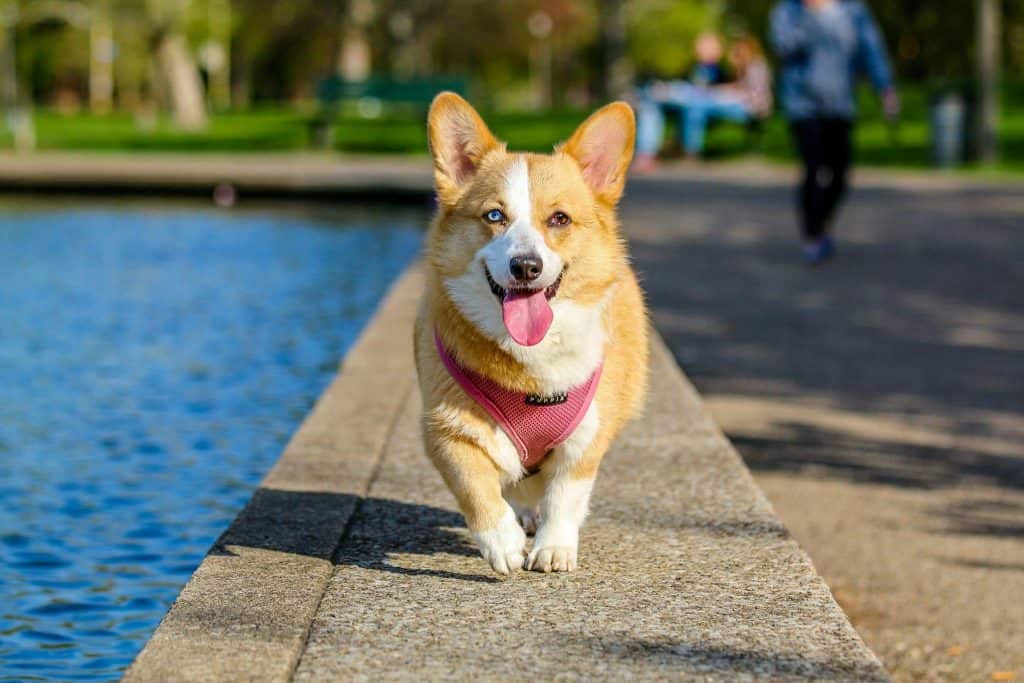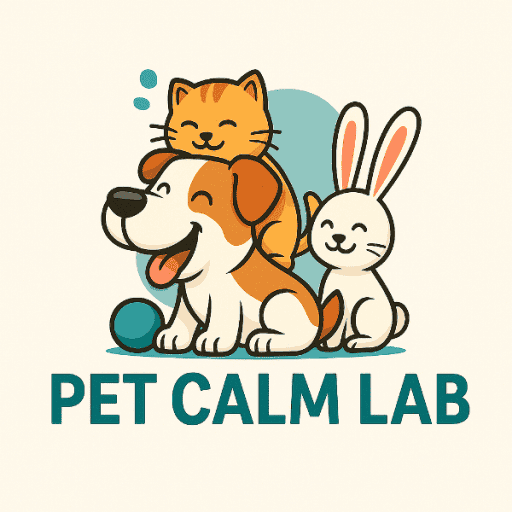
10 Best Calming Treats for Anxious Dogs (2025 Guide)!
Is your dog pacing, whining, or hiding under the bed during thunderstorms? You’re not alone.
In 2025, calming dog treats are one of the fastest-growing pet wellness trends—and for good reason. As more pet parents seek natural, non-invasive solutions to manage anxiety, calming chews and supplements have become go-to solutions for everyday stress in dogs.
From loud fireworks and separation anxiety to car rides and vet visits, our furry companions face stress triggers that humans often overlook. And unlike prescription meds, calming treats offer a gentle, holistic approach—perfect as a first step before considering clinical intervention.
This guide will cover:
- What calming treats are and how they work
- Common causes of dog anxiety
- The best ingredients to look for
- Top 10 calming treats of 2025
- How to choose the right one for your pup
- Safety tips, expert advice, and more
Calming treats for dogs are specially formulated chewables, soft bites, or supplement-based edibles designed to help reduce stress, fear, and nervous behaviors in dogs. They are not just snacks—they are functional treats that support emotional balance and promote a sense of calm in dogs dealing with anxiety.
The Purpose Behind Calming Treats!
The core objective of calming treats is to soothe anxious behaviors without sedating your dog or introducing synthetic drugs too early in the process. They act as a gentle first step—something you can try before considering pharmaceutical solutions.
Whether your dog trembles during thunderstorms, barks endlessly when left alone, or struggles with car rides or unfamiliar guests, calming treats can ease these responses and make life more manageable—for both your dog and you.
How Do Calming Treats Work?

Most calming treats work by influencing the dog’s brain chemistry in safe, natural ways. They typically support the production of neurotransmitters like serotonin and dopamine, which are responsible for mood regulation. At the same time, many ingredients help reduce cortisol levels, the hormone associated with stress.
Here’s how that translates into real effects:
- Your dog becomes less reactive to triggering stimuli.
- Over time, they begin to associate calmness with previously stressful situations.
- You get a more balanced, emotionally resilient companion.
Importantly, calming treats do not suppress your dog’s personality or energy. When chosen correctly, they simply take the edge off overwhelming feelings so your dog can better adapt and cope.
Calming Treats vs. Prescription Medications!
While both serve the purpose of managing anxiety, there is a significant difference between calming treats and pharmaceutical medications:
| Feature | Calming Treats | Prescription Medications |
|---|---|---|
| Composition | Natural ingredients like herbs, amino acids, and melatonin | Synthetic compounds like benzodiazepines or SSRIs |
| Onset | Varies by ingredient; generally takes 30 mins to 2 hours | Often fast-acting but can have strong effects |
| Side Effects | Minimal when used as directed | Can include sedation, digestive upset, or dependency |
| Accessibility | Over-the-counter | Requires vet prescription |
Calming treats are ideal for mild to moderate anxiety and are widely used by pet parents looking for a low-risk, non-invasive approach. Medications, on the other hand, are typically reserved for severe cases or when natural remedies haven’t worked.
A Gentle Start to Anxiety Support!
Many pet owners turn to calming treats as a proactive, preventative measure—especially before known stressors like fireworks, vet visits, or travel. They are not a “magic pill,” but when used consistently and in the right context, calming treats can create a noticeable difference in your dog’s daily behavior, responsiveness, and overall well-being.
Common Causes of Anxiety in Dogs!
Understanding the root causes of dog anxiety Symptoms is crucial when selecting the most effective calming treatment. Just like people, dogs experience stress and fear triggered by various factors. The more you know about these triggers, the better equipped you’ll be to help your dog feel safe and secure. Here are the most common causes of anxiety in dogs:
1. Separation Anxiety
Separation anxiety is one of the most prevalent behavioral issues in dogs. It occurs when a dog becomes excessively distressed when left alone or separated from their owner. Symptoms can include destructive behaviors like chewing furniture, excessive barking, urinating or defecating indoors, and even attempts to escape.
This type of anxiety often starts when a dog is young, but can also develop later in life due to changes in routine, environment, or family dynamics. Dogs with separation anxiety rely heavily on their human companions for comfort, and the absence of that familiar presence triggers emotional turmoil. Calming treats can be helpful here by promoting relaxation and reducing stress when the dog is left alone.
2. Noise Phobias (Thunderstorms, Fireworks, etc.)
Many dogs are terrified of loud, sudden noises such as thunderstorms, fireworks, and even household items like vacuum cleaners or blenders. This fear can be so intense that it causes trembling, panting, drooling, and attempts to hide.
Dogs with noise phobia experience a heightened startle response, and the loud, unpredictable nature of these noises can overwhelm their senses. The problem is often cyclical: The more a dog experiences fear from a particular sound, the more likely it is to respond with anxiety the next time that noise occurs. Calming treats containing ingredients like CBD, chamomile, and valerian root can help ease this anxiety and promote a sense of safety during stressful situations.
3. Travel-Related Stress
Car rides or travel in general can be incredibly stressful for some dogs. Whether it’s the motion of the car, being confined to a crate, or unfamiliar environments during trips, travel stress can manifest in drooling, restlessness, vomiting, and panting. This anxiety often stems from a lack of control or negative past experiences.
For dogs that associate car rides with visits to the vet or the groomer, the stress can be especially intense. Melatonin-infused calming treats, for example, can promote relaxation during long car rides, ensuring that your dog remains calm and composed while on the move.
4. Vet or Grooming Visits
For many dogs, trips to the vet or grooming appointments are triggers for extreme anxiety. The unfamiliar smells, sights, and sounds of the clinic or grooming salon can create an overwhelming experience, leading to fear, agitation, or aggression. Dogs may associate these visits with discomfort or pain, especially if they’ve had negative experiences in the past (like vaccinations or exams).
Calming treats can be helpful in reducing the stress associated with these visits. Treats designed to help manage situational stress can be given before the appointment, helping to calm the dog and reduce their fear response.
5. Rescue/Adoption Trauma
Dogs that have been rescued or adopted from shelters often carry emotional scars from their past experiences. They may have been neglected, abused, or abandoned, leading to heightened anxiety, fear, and mistrust of new environments or people. This type of trauma-based anxiety can take time to heal and may require a combination of positive reinforcement, socialization, and calming aids.
For dogs with rescue-related trauma, L-Theanine (a calming amino acid) and passionflower can be especially beneficial. These ingredients help to balance mood and soothe nervousness without sedation, making it easier for the dog to adjust to their new home.
6. Aging or Cognitive Dysfunction
As dogs get older, some may develop anxiety due to cognitive dysfunction syndrome (CDS), a condition similar to dementia in humans. Dogs with CDS may experience confusion, disorientation, and difficulty adjusting to changes in their environment. This can lead to increased anxiety, especially when their routine or familiar surroundings change.
Older dogs may also become more anxious due to physical discomfort or a decrease in sensory abilities. Tryptophan-based treats or melatonin supplements can help ease anxiety and promote better sleep patterns, which is crucial for elderly dogs managing age-related changes.
By identifying the specific cause of your dog’s anxiety, you can make more informed decisions about which calming treats or methods to try. Each dog is unique, and the type of anxiety they experience will influence how they respond to different calming products.
Key Ingredients to Look For in Calming Treats!
When selecting calming treats for your anxious dog, it’s essential to know which ingredients work best to reduce stress and promote relaxation. Here are some of the most common, effective ingredients in calming treats and how they help:
Top Ingredients & Benefits!
- L-Theanine – Found in green tea; promotes calm without drowsiness.
- CBD (Hemp-derived) – Non-psychoactive, supports emotional balance.
- Chamomile – A gentle sedative and muscle relaxant.
- Valerian Root – Reduces tension and helps with hyperactivity.
- Melatonin – Supports restful sleep and calm during nighttime anxiety.
- Passionflower – Eases restlessness, fear, and nervousness.
- Tryptophan – Precursor to serotonin; boosts mood and emotional regulation.
Ingredients to Avoid!
While there are many beneficial ingredients in calming treats, there are also a few that should be avoided. High levels of sugar, artificial flavors, and certain unsafe herbs can cause adverse reactions or contribute to other health issues in dogs. Always look for natural, vet-approved options, and consult your veterinarian before introducing new ingredients or supplements to your dog’s routine.
- Artificial flavors or colors
- Added sugar or corn syrup
- Unsafe herbs like nutmeg or caffeine
- Always consult your vet before starting any new supplement
Top 10 Calming Treats for Anxious Dogs (2025 Picks)!
Here are the best calming treats for dogs in 2025—vetted for safety, effectiveness, and ingredient quality:
| Name | Key Ingredients | Best For | Pros | Cons | Price |
|---|---|---|---|---|---|
| 1. Zesty Paws Calming Bites | L-Theanine, Chamomile, Passionflower | Separation anxiety | Tasty duck flavor, no fillers | May take 1-2 weeks to see results | ₹1,999 |
| 2. PetHonesty Hemp Calming Chews | Hemp, Chamomile, Valerian Root | Noise phobia | Natural, vet-formulated | Not ideal for puppies | ₹2,299 |
| 3. NaturVet Quiet Moments | Melatonin, Ginger, Thiamine | Travel anxiety | Fast-acting | Strong scent | ₹1,499 |
| 4. VetIQ Calming Support | L-Tryptophan, Chamomile | Daily mild anxiety | Affordable, soft chews | Not suitable for large dogs | ₹999 |
| 5. Honest Paws Calm Bites | Full-spectrum CBD | Chronic anxiety | Organic, lab-tested | Expensive | ₹2,799 |
| 6. FurroLandia Hemp Calming Treats | Hemp Oil, Chamomile | Aggression or hyperactivity | Long-lasting effect | Taste might not suit picky eaters | ₹1,899 |
| 7. Bark&Spark Calming Treats | Melatonin, Valerian Root | Nighttime stress | Soft, chewable | Small container | ₹1,199 |
| 8. Pawfect Pets Calming Chews | Tryptophan, Passionflower | Multi-pet households | Grain-free, no corn | Slightly dry texture | ₹1,899 |
| 9. VETRISCIENCE Composure | Colostrum, L-Theanine | Vet/grooming visits | Clinical-grade, vet-recommended | Higher price point | ₹2,499 |
| 10. Pawfy Calming Chews | Hemp, Chamomile, Valerian | Overall daily calm | Made in USA, no GMOs | Moderate effect on large breeds | ₹1,599 |
How to Choose the Right Calming Treat for Your Dog?

Every dog is different. Here’s how to find the perfect match:
- Size & Age – Small vs large breed; some treats are not puppy-safe.
- Type of Anxiety – Is it triggered by storms or is it all-day nervousness?
- Format – Chews, soft bites, powders, or treats?
- Allergies & Flavors – Choose hypoallergenic options for sensitive stomachs.
- Speed of Action – Need something instant (e.g., melatonin)? Or long-term (e.g., L-Theanine)?
Are Calming Treats Safe for Dogs?
Calming treats are generally considered safe for most dogs when used as directed, but like any supplement or product, they should be used with care and under the guidance of a veterinarian. Here’s everything you need to know about the safety of calming treats for dogs:
Safety Profile of Natural Calming Treats!
Natural calming treats typically contain ingredients like L-Theanine, chamomile, valerian root, and CBD, which have been shown to be safe for dogs in appropriate doses. These ingredients help alleviate anxiety without causing harmful side effects. Since they are derived from natural sources, the risk of toxicity is minimal compared to pharmaceutical medications.
However, it’s important to remember that every dog is different, and even natural ingredients can cause reactions in certain pets. Always start with a small dose to see how your dog responds, and monitor them for any unusual behaviors or side effects.
How Often Can Calming Treats Be Given?
The frequency with which you can give calming treats depends on the specific product and your dog’s individual needs. Most calming treats are formulated for daily use, but it’s essential to follow the manufacturer’s recommended dosage and consult your vet for personalized advice. If your dog only needs occasional support for stress, such as during car rides or thunderstorms, you may not need to administer them daily.
Signs Your Dog is Reacting Well (or Poorly)!
Positive Signs!
- Your dog seems calmer and more relaxed during stressful situations.
- There is noticeable improvement in behaviors like barking, pacing, or destructive chewing.
- They maintain a normal energy level without being overly sedated or lethargic.
Negative Signs!
- Unusual lethargy or drowsiness, which may indicate an overdose or sensitivity to the ingredients.
- Digestive upset, such as vomiting or diarrhea, which could be a sign of intolerance to specific ingredients.
- Behavioral changes like aggression, confusion, or increased nervousness.
If you notice any negative reactions, it’s important to discontinue use and consult your veterinarian.
When to Stop or Switch to Other Methods?
If you don’t see improvements in your dog’s anxiety levels after using calming treats for a reasonable period, it may be time to reassess your approach. For some dogs, calming treats may not be enough on their own, especially if the anxiety is severe or chronic.
If calming treats seem to be causing side effects or not providing the desired relief, consult your veterinarian. They may recommend switching to a different product, adjusting the dosage, or exploring other anxiety management strategies, such as behavioral training or prescription medications.
Alternative or Complementary Calming Methods!
Pair treats with lifestyle and behavioral solutions for better results:
- Puzzle Toys – Mental stimulation distracts from stress.
- Anxiety Vests – Applies light pressure to calm the nervous system.
- Pheromone Diffusers – Mimics calming scent from nursing mothers.
- Behavioral Training – Desensitization and counterconditioning.
- Vet-Prescribed Meds – For severe anxiety or trauma cases.
When to See a Veterinarian or Dog Behaviorist?
Calming treats are a great start—but they’re not a cure-all.
Book a professional consultation if:
- Anxiety doesn’t improve after 2–3 weeks.
- Your dog becomes destructive, aggressive, or self-harming.
- There’s sudden behavior change in older dogs (could signal cognitive decline).
- You need a custom plan combining behavior therapy + meds.
Final Thoughts!
Calming treats can be an effective, accessible tool in helping your dog cope with anxiety—but they are not a one-size-fits-all solution or a permanent cure. Every dog is unique, and what works for one may not work for another. That’s why it’s important to approach your dog’s anxiety with patience, observation, and a willingness to experiment with different solutions.
Think of calming treats as a first step—a gentle, non-invasive way to take the edge off during stressful situations like vet visits, thunderstorms, or separation from you. They can help restore balance and create a sense of security for your dog when used consistently and correctly.
That said, calming treats work best when paired with a broader approach that may include behavioral training, environmental adjustments, or even vet-prescribed treatments for more serious cases. If you’re ever unsure, your veterinarian is your best partner in navigating your dog’s emotional well-being.
To recap:
- Calming treats are gaining popularity in 2025 as safe, natural support for dog anxiety.
- Look for trusted ingredients like L-Theanine, CBD, chamomile, and valerian root.
- Monitor how your dog reacts, and don’t be afraid to try a few products before you find the right fit.
- For lasting change, combine treats with consistent routines, comfort, and professional advice when needed.
Start small. Stay informed. And most importantly—be kind and patient. With the right support, even the most anxious pup can find their calm.
FAQs!
Do calming treats actually work for dogs?
Yes—when made with clinically studied ingredients, they can reduce anxiety and promote calm.
How long do calming treats take to work?
Some act within 30–60 minutes (like melatonin), while others build up over time (like L-Theanine).
Can I give calming treats daily?
Most are safe for daily use—just follow the dosage instructions and consult your vet.
Are calming treats safe for puppies?
Some are, but always check the label. Many brands have age-specific formulas.
What’s better: CBD or melatonin for dog anxiety?
CBD is better for chronic anxiety; melatonin is ideal for short-term or sleep-related issues.



